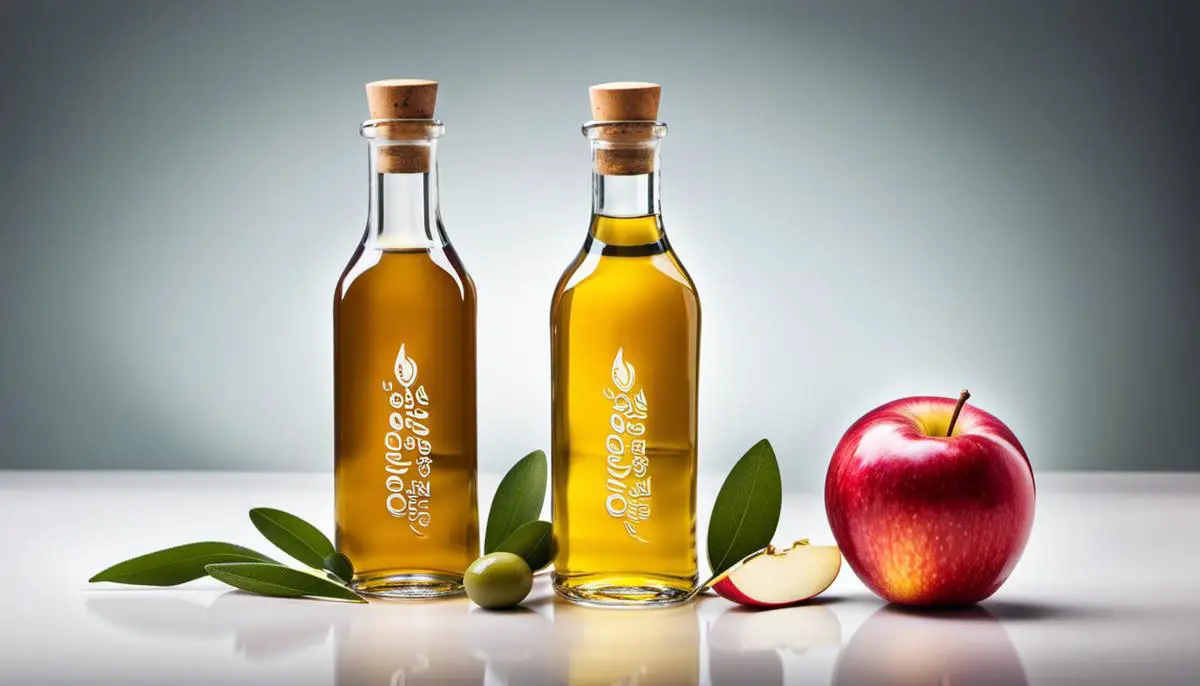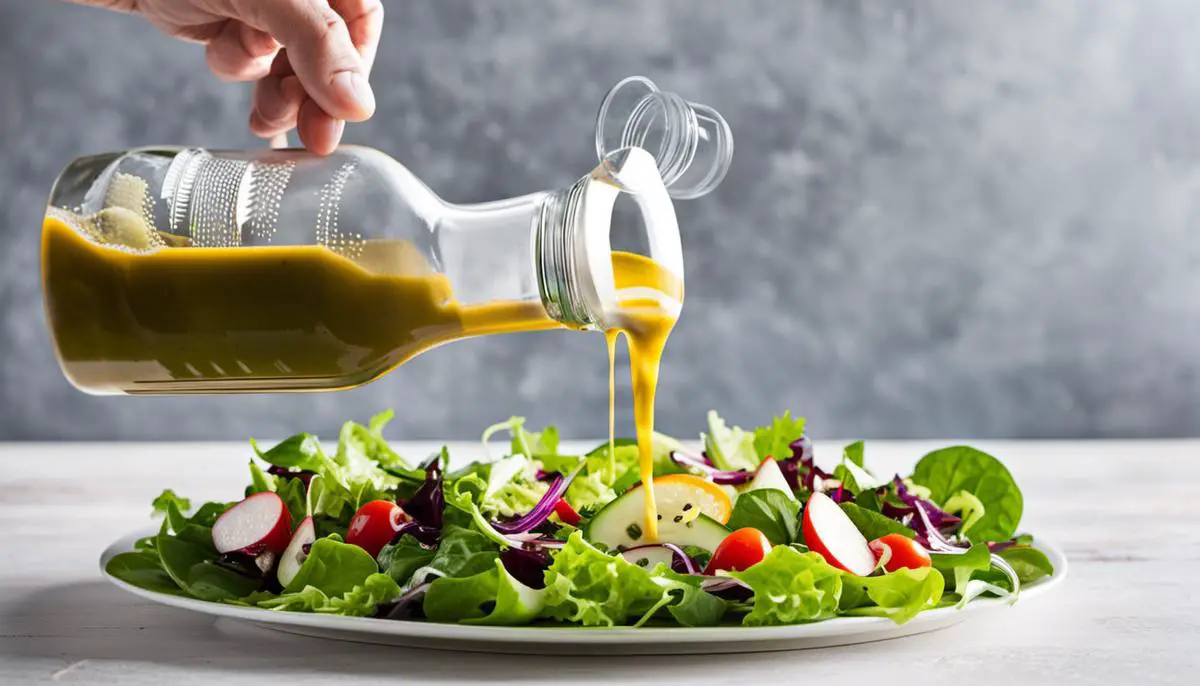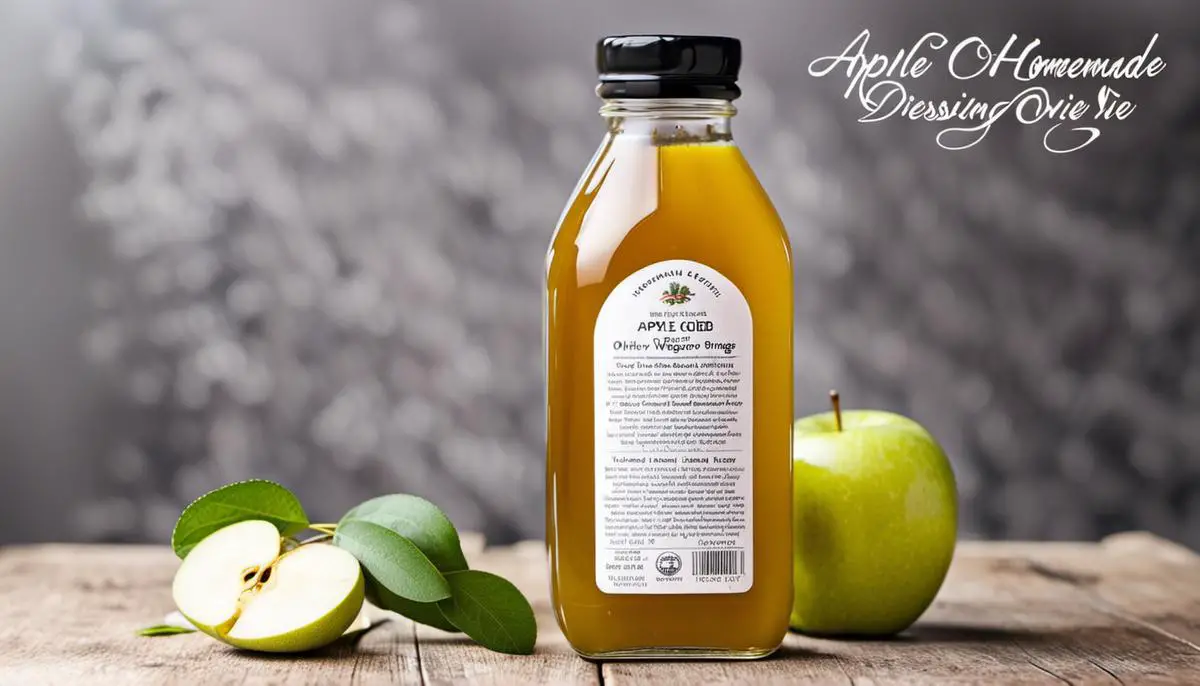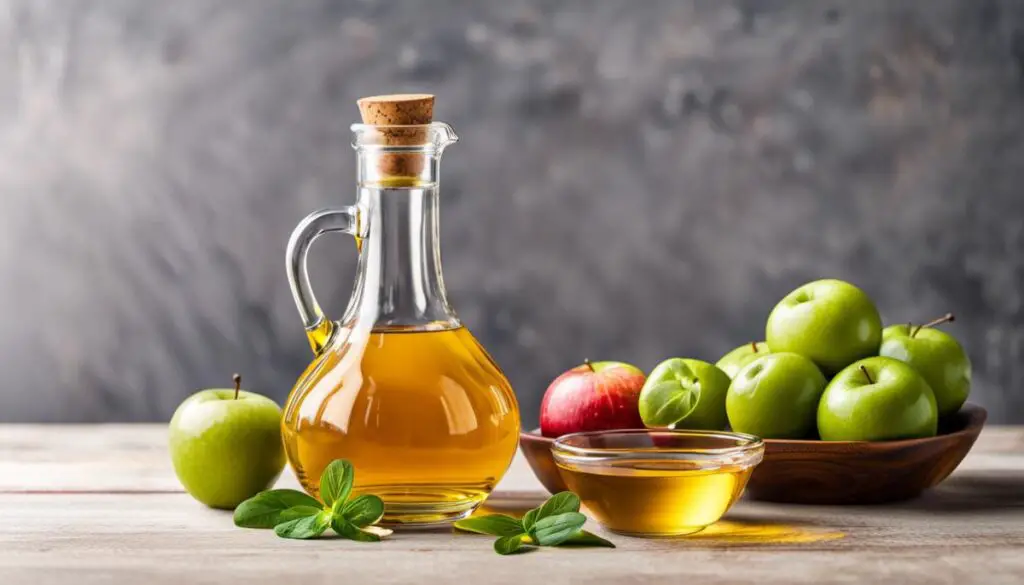Dressing might seem like a minor detail, but it can truly make or break a salad. To truly appreciate the art of dressing, it’s essential to delve into and understand the key ingredients that come together to elevate even the most humble mix of greens. This discussion centers on the power duo of apple cider vinegar and olive oil. They share not only a rich tradition rooted in culinary history but also bring a plethora of health benefits to the table. The combination of these two ingredients, with their contrasting yet complementary properties, can create a salad dressing that is simple, yet sophisticated.
Understanding the Ingredients
Understanding the Qualities of Apple Cider Vinegar and Olive Oil
Apple cider vinegar, simply known as ACV, is made from fermented apple cider and it’s known for its tangy yet slightly sweet flavor. Touting numerous health benefits, ACV is packed full of probiotics, helps with digestion, and can aid in weight loss. In dressing, the sharpness of the vinegar provides a contrast to the other ingredients.
On the other hand, Olive oil, particularly extra virgin olive oil, is highly valued for its flavor and health benefits. It has a fruity yet slightly bitter flavor and contains monounsaturated fat, vitamin E, and antioxidants which can aid with inflammation and heart health. In dressings, it’s used as a base, adding creaminess and helping to blend the flavors of the other ingredients.
When combined, ACV and olive oil create a perfect blend of tangy and creamy, sour and sweet – a balance that makes for a delightful dressing. The apple cider vinegar cuts through the oiliness of the olive oil, while the oil in turn mellows the acidity of the vinegar.
Exploring Variations
While ACV and Olive oil form a great pair, there are countless variations you can explore using different types of vinegar and oil. For vinegars, balsamic offers a sweet and tart flavor, red wine vinegar is more of a powerfully tangy option, while white wine vinegar strikes a balance with a slightly floral note.
For oils, try avocado oil for its light, buttery flavor, or walnut oil provides a nutty profile. Even within olive oils, there are variations – a robust, peppery Tuscan oil will give a different result to a delicate, fruity Ligurian oil.
Each combination will deliver a unique taste profile and can greatly vary the experience of the dressing. With so many options available, you can create a custom dressing that suits your palette perfectly. Keep in mind, balance is key. The vinegar’s acidity should complement the smoothness of the oil, and vice versa.

Dressing Preparation Techniques
Understanding Emulsification in Dressing Preparation
When it comes to salad dressings, the process of emulsification is key. In culinary terms, emulsification is the process of combining two liquids that would generally resist each other, such as oil and vinegar. The main goal is to create a single, smoothly integrated blend that won’t separate on standing.
Vinegar and Oil: A Classic Combination
The traditional combination for dressings, used across countless cultures, is vinegar and oil. The sour, sharp character of vinegar balances the smooth richness of oil. In the case of an apple cider vinegar dressing with olive oil, apple cider vinegar, which is known for its tangy kick and health benefits, offers a gentle tartness that complements the slightly bitter, fruity notes of olive oil.
The Art & Science of Emulsifying Vinegar and Oil
One might notice that mixing oil and vinegar results in the immiscible substances separating almost immediately. This is where the emulsion process comes in.
Start by pouring the vinegar into a bowl first. The reason we start with vinegar is that it allows easier addition and emulsification of the oil, which is added slowly, a few drops at a time initially. The slow pouring of oil into the vinegar serves as a steady process to help create the even dispersion needed in an emulsion.
To create this emulsion, vigorous whisking or shaking is necessary. This breaks the oil into tiny droplets, distributing it evenly throughout the vinegar. Working continually is crucial, as this keeps the oil from re-forming into large drops and separating.
Techniques to Prevent Separation of Vinegar and Oil
While the vigorous whisking or shaking helps, a third component called an emulsifier is often used to prevent the oil and vinegar from separating. Dijon mustard and honey make good emulsifiers and can add an additional flavor note. Just a teaspoon is usually enough to stabilize a simple vinaigrette.
In conclusion, preparing apple cider vinegar dressing with olive oil involves understanding the emulsification process, integrating vigorous whisking techniques into the process, and learning how to effectively prevent the separation of vinegar and oil.

Recipe Experimentation
Experimenting with Apple Cider Vinegar and Olive Oil Dressing
To create your apple cider vinegar and olive oil dressing, start simple with a basic recipe. The formula of this dressing includes 1 part apple cider vinegar to 3 parts olive oil. Add a teaspoon of honey for a touch of sweetness and a bit of salt and pepper for seasoning. Whisk all ingredients together until they’re well combined.
Dressing Variations: Additions and Proportions
To experiment with this dressing, you can adjust the ingredients and their proportions. For instance, you might try using 2 parts vinegar and 3 parts oil if you favor a sourer taste. Additions such as garlic, mustard, or different herbs can also be included. A clove or two of minced garlic can add a robust flavor while a spoonful of Dijon mustard can provide some zing. Mixing in some basil, thyme, or rosemary can contribute to the creation of a more intricate taste.
To discover your personal preference, start with small amounts of these extras and increase as you see fit after taste testing. Remember, it’s easier to add more of an ingredient than it is to take it away once it’s been mixed in.
Paired Perfection
Pairing your homemade dressing with different types of salads or dishes can also be part of the experimentation. It’s a great finishing touch to a tossed salad. Vary up the greens you use, from romaine to kale to spinach, and add in a variety of veggies like cucumbers, bell peppers, and tomatoes to see how the dressing compliments each component.
This dressing can also be used to add flavor to cooked vegetables, grains, and proteins. Consider drizzling it over roasted brussels sprouts, a quinoa salad, or a grilled chicken breast.
Taste Test and Adjust
The final and crucial step in the recipe experimentation is the taste test. After each variation, take the time to taste the dressing and note what you like and what could be improved. Remember the alterations you made so you can replicate the successful recipes and learn from the less successful ones.
Eventually, you’ll come to understand your flavor preferences and have a handful of personalized apple cider vinegar and olive oil dressing recipes at your disposal. Good luck with your kitchen experimentation!

Exploring the world of dressings through the lens of this delightful combination of apple cider vinegar and olive oil opens up a world of culinary possibilities. By understanding the intricate nuances of these ingredients, and how they marry to form a harmonious blend, one may find a newfound appreciation for the craft of making dressings. The journey doesn’t stop there, as with the knowledge acquired, one is encouraged to play around with different proportions, complementary ingredients, and try out pairings with different dishes. The final flavor is a testament to the versatility and vitality that these two humble ingredients bring to our kitchens and our plates, making every salad an adventure in itself.
